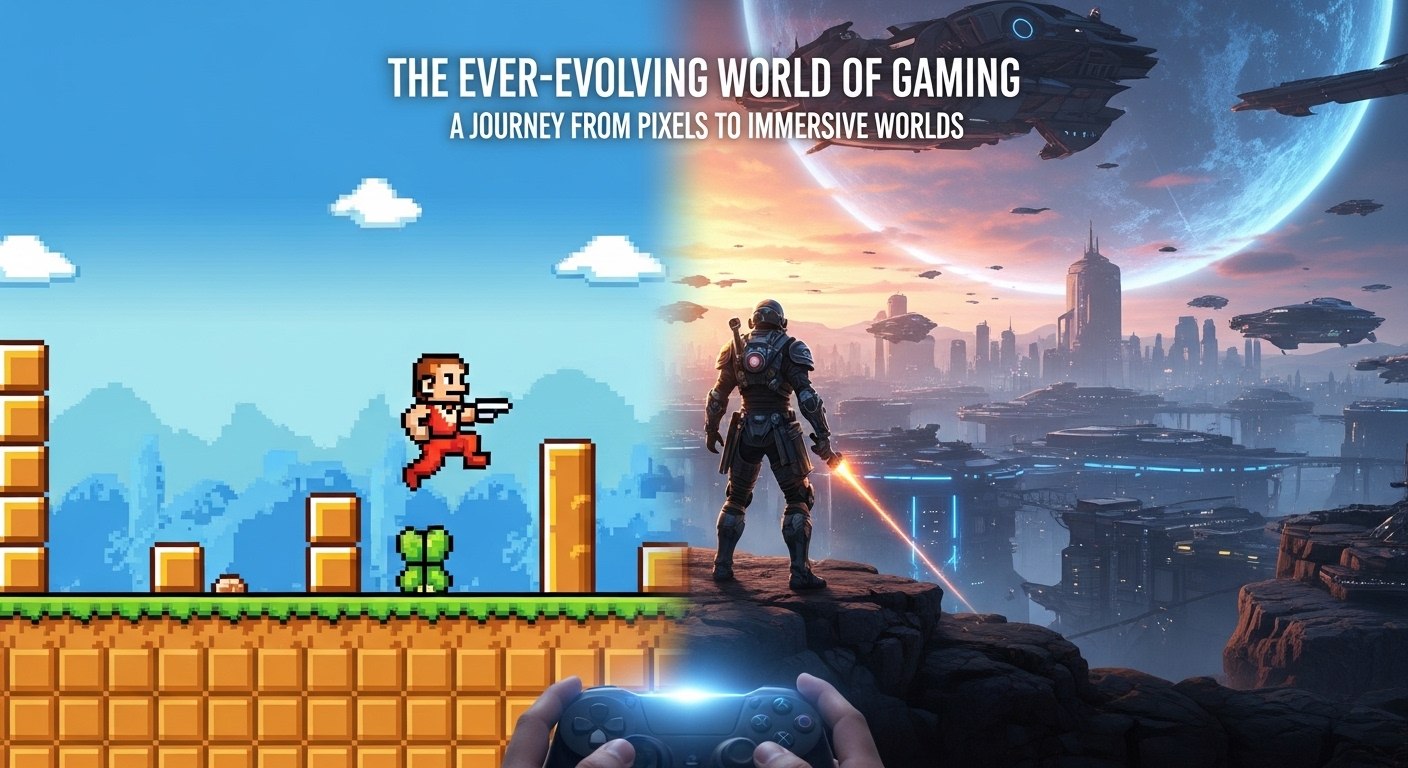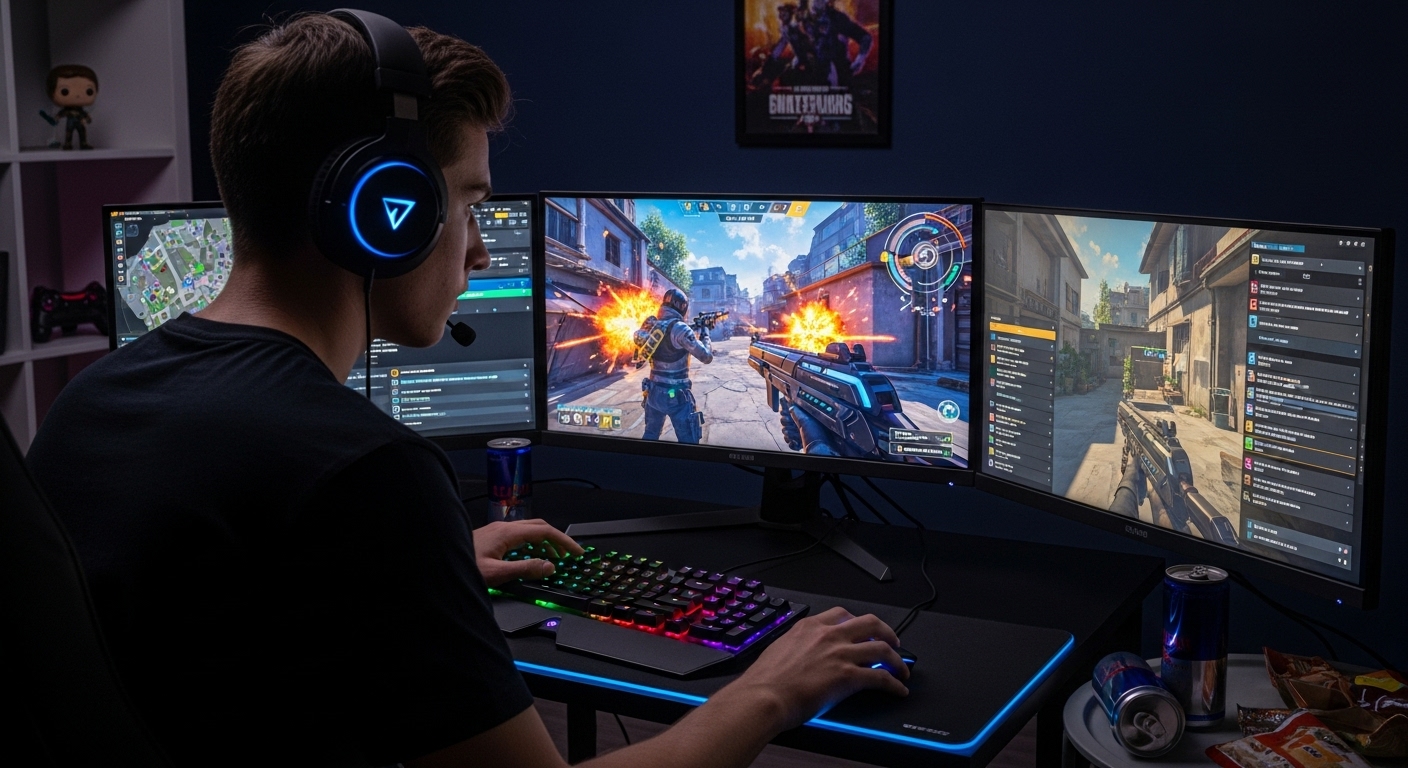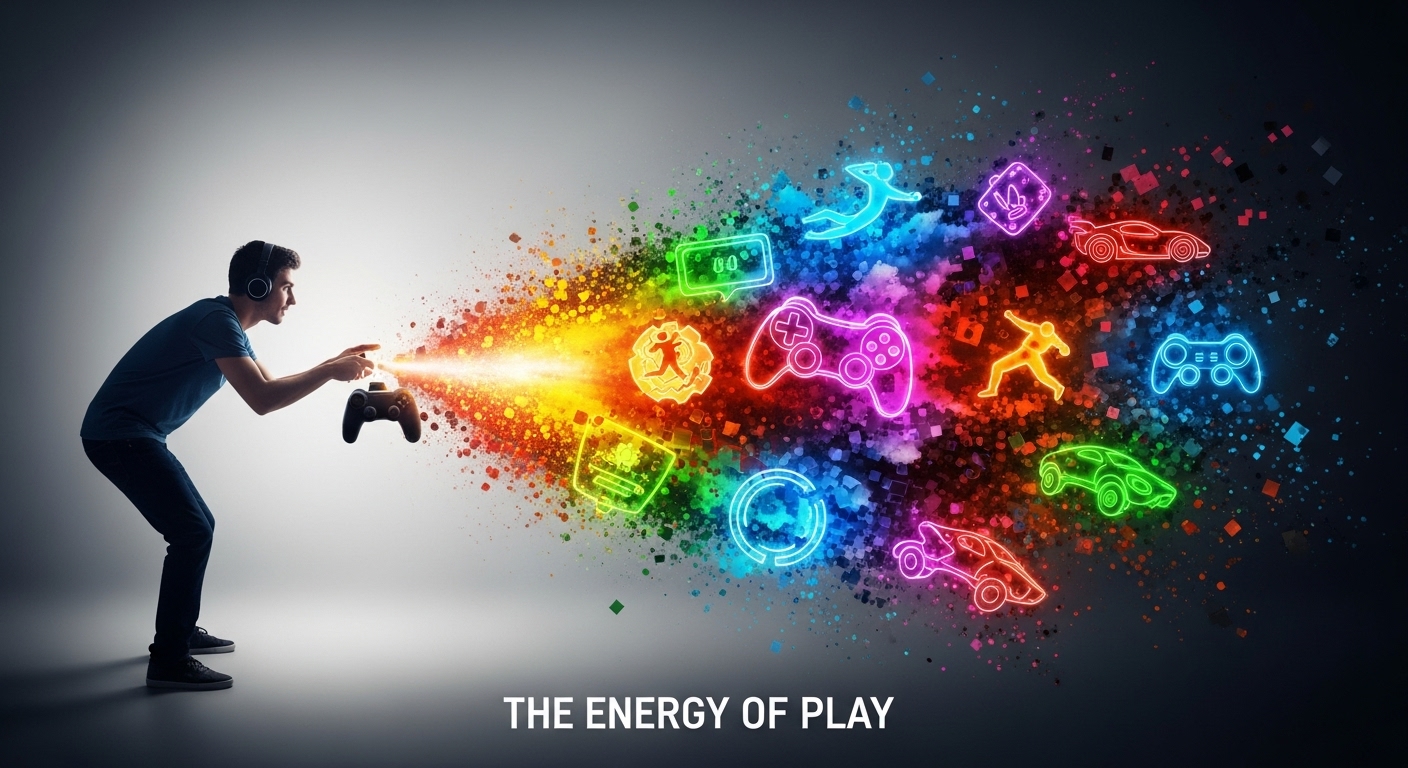Gaming has become one of the most powerful forms of entertainment, art, and technology in the modern world. What once began as simple pixelated images on bulky televisions has evolved into a multibillion-dollar global industry that shapes culture, fuels creativity, and connects millions across continents. The story of gaming is not just about consoles or computers; it is about imagination, innovation, and human curiosity. This blog explores how gaming has transformed from its humble beginnings to the immersive experiences we know today, its impact on society, and where it might go next.
The Birth of Gaming: When Pixels Ruled the World
The journey of gaming began in the early 1970s, when technology was still in its infancy. The first video games were incredibly simple by today’s standards—lines, dots, and blocks moving across a black screen. Yet these small beginnings laid the foundation for an entire entertainment revolution.
One of the earliest commercial successes was Pong, released by Atari in 1972. It was a two-dimensional tennis simulation with nothing but white rectangles and a bouncing dot. Still, it captured the imagination of millions. The idea that people could interact with a screen, rather than just watch it, was groundbreaking.
As arcade machines began to populate malls and entertainment centers, gaming grew from a novelty into a cultural phenomenon. Titles like Space Invaders, Pac-Man, and Donkey Kong defined the late 1970s and early 1980s. These games brought joy, challenge, and social interaction to a generation that was just discovering digital entertainment.
The Rise of Home Consoles: Gaming Enters the Living Room
The late 1970s and early 1980s saw gaming move from arcades into homes. Companies like Atari, Nintendo, and Sega began producing consoles that could be connected to televisions, giving families the chance to experience gaming together.
The Atari 2600, released in 1977, was among the first major home gaming systems. It introduced cartridge-based games, allowing players to switch between titles easily. Suddenly, gaming was not just an arcade pastime—it was part of daily family life.
However, the early gaming industry also faced its first major crisis: the video game crash of 1983. Oversaturation of the market with low-quality games led to declining consumer trust. Many thought gaming was just a passing fad. But then, a company from Japan changed everything.
In 1985, Nintendo released the Nintendo Entertainment System (NES) in North America. With it came legendary titles such as Super Mario Bros., The Legend of Zelda, and Metroid. These games weren’t just about high scores; they told stories, introduced memorable characters, and transported players into imaginative worlds. Nintendo’s success revived the entire gaming industry and set the stage for the future.
The 1990s: The Golden Era of Innovation
The 1990s are often regarded as the golden era of gaming—a decade filled with innovation, experimentation, and competition. Graphics improved dramatically, soundtracks became iconic, and gameplay became more complex.
The rivalry between Sega and Nintendo defined much of the decade. Sega’s Genesis console and Nintendo’s Super NES brought unforgettable classics like Sonic the Hedgehog, Super Mario World, and Street Fighter II. This era also introduced the concept of gaming mascots—characters who became cultural icons. Mario, Sonic, and Link were no longer just game sprites; they were household names.
Meanwhile, the introduction of 3D graphics in the mid-1990s revolutionized gaming yet again. When Sony released the PlayStation in 1994, it signaled a new chapter. Games like Final Fantasy VII, Metal Gear Solid, and Resident Evil showcased cinematic storytelling, realistic graphics, and deep emotional experiences that rivaled movies.
By the end of the decade, gaming had evolved into a mainstream entertainment medium. The question was no longer whether video games could tell stories—it was how far they could go.
The 2000s: The Era of Online Gaming and Global Connection
The new millennium brought a digital revolution that would forever change gaming: the rise of the internet. Online connectivity turned gaming from a solitary or local activity into a global social experience.
Consoles like the PlayStation 2, Xbox, and Nintendo GameCube introduced online multiplayer capabilities. Players could now compete or cooperate with others around the world, forming digital communities that transcended borders. Games like Halo 2, World of Warcraft, and Counter-Strike defined the early online gaming culture.
The 2000s also saw a massive leap in technology. High-definition graphics, improved physics engines, and complex AI made virtual worlds more believable than ever before. The PlayStation 2 became the best-selling console of all time, while PC gaming flourished with titles like The Sims, Half-Life 2, and Warcraft III.
At the same time, portable gaming thrived. Nintendo’s Game Boy Advance and Nintendo DS, along with Sony’s PlayStation Portable (PSP), brought gaming into people’s pockets. You could now play your favorite games anywhere, anytime.
The Rise of Mobile Gaming: A Game in Every Hand
While console and PC gaming continued to evolve, another revolution was quietly taking shape—the rise of smartphones. When touchscreens became common in the late 2000s, a new era of gaming began.
Mobile gaming democratized the industry. Suddenly, anyone with a phone could be a gamer. Titles like Angry Birds, Candy Crush Saga, and Clash of Clans became global sensations, reaching audiences that traditional gaming had never touched.
This shift blurred the lines between casual and hardcore gamers. You no longer needed expensive hardware or a console; gaming was now as simple as tapping your screen. Mobile games introduced new business models as well—free-to-play mechanics, microtransactions, and ad-based revenue systems became standard.
Although some traditional gamers criticized mobile gaming for being too simplistic, its impact on the industry was undeniable. It expanded gaming’s reach to billions of people and proved that accessibility could be just as important as complexity.
The Modern Era: Virtual Worlds and Real Emotions
Today, gaming is more advanced, diverse, and emotionally powerful than ever. Modern consoles like the PlayStation 5, Xbox Series X, and high-end gaming PCs can produce visuals nearly indistinguishable from real life. Yet, what makes gaming truly special today is not just its technology—it’s the experiences it delivers.
Open-world games like The Witcher 3: Wild Hunt, Red Dead Redemption 2, and Elden Ring offer vast, living worlds where players can craft their own stories. Narrative-driven titles such as The Last of Us, God of War, and Life Is Strange explore deep emotional and moral themes, rivaling Hollywood films in storytelling quality.
Meanwhile, virtual reality (VR) and augmented reality (AR) have brought gaming to an entirely new dimension. With VR headsets, players can step inside their favorite worlds, exploring them from a first-person perspective. AR games like Pokémon GO merge digital and physical realities, turning the world around us into a playground.
Gaming is no longer just about playing—it’s about living an experience.
The Social and Cultural Impact of Gaming
Gaming has transcended entertainment to become a cultural force. It influences music, movies, fashion, and even politics. Esports—competitive gaming—has emerged as a professional industry, with tournaments watched by millions and players earning fame comparable to traditional athletes.
Socially, gaming connects people in ways that few other mediums can. Online communities, guilds, and multiplayer games have fostered friendships across continents. In some cases, players have even met their life partners through gaming.
At the same time, games have become tools for learning, creativity, and self-expression. Titles like Minecraft encourage building and imagination, while educational games teach history, science, and problem-solving in interactive ways.
However, gaming’s rise has also sparked debates about addiction, screen time, and the effects of violent content. Researchers and developers alike continue to explore how to balance engagement with well-being. The conversation is ongoing, but one thing is clear: gaming is now deeply woven into the fabric of modern life.
The Artistry of Game Design
Video games are not just products—they are works of art. Every pixel, line of code, and note of music contributes to an emotional experience. Game designers blend storytelling, technology, visual design, and psychology to create worlds that feel alive.
From the haunting atmosphere of Silent Hill to the vibrant beauty of Journey, gaming showcases a diversity of artistic expression unmatched by any single medium. Developers, writers, artists, and musicians collaborate to make experiences that resonate emotionally and intellectually.
Moreover, independent developers have risen to prominence in recent years, proving that creativity does not depend on budget. Indie games like Hollow Knight, Celeste, and Undertale have shown that passion and vision can create masterpieces that rival big-budget productions.
The artistry of gaming lies in its interactivity. Unlike films or books, games invite the player to become part of the narrative. Every decision, action, and choice shapes the story—making each experience personal and unique.
Gaming as a Reflection of Society
Gaming often mirrors the world around us. Themes such as morality, freedom, power, and identity are explored through interactive storytelling. For instance, games like Bioshock question philosophical ideas about free will, while Cyberpunk 2077 delves into the ethics of technology and human augmentation.
Representation has also become a growing focus within gaming. Developers are increasingly aware of the need for diversity in characters, cultures, and perspectives. Inclusive storytelling allows players from all backgrounds to see themselves reflected in the virtual worlds they love.
In this way, gaming serves as both a mirror and a teacher—showing us who we are and who we aspire to be.
The Future of Gaming: Boundless Possibilities
Looking ahead, the future of gaming seems limitless. Emerging technologies like artificial intelligence, cloud gaming, and blockchain-based economies are set to transform the landscape once again.
AI-driven games could adapt dynamically to each player’s style, creating personalized narratives and challenges. Cloud gaming services promise to remove hardware limitations entirely, allowing players to stream high-quality games instantly on any device.
Moreover, as gaming merges with virtual reality, social interaction, and creative platforms, it may evolve into something even greater—a new digital culture where imagination and reality coexist.
We may see worlds where players build entire societies, where AI companions grow and learn, and where virtual achievements have real-world value. The line between game and life may blur further, giving rise to new forms of storytelling and connection that we can only begin to imagine.
Why Gaming Matters
At its core, gaming is about more than entertainment. It is about human experience—the thrill of discovery, the satisfaction of mastery, the bonds of cooperation, and the joy of creativity. It brings people together across borders, generations, and languages.
For some, gaming is an escape; for others, it’s a career, an art form, or a passion. It has the power to teach empathy, inspire imagination, and even heal. Studies have shown that gaming can improve cognitive skills, problem-solving, and teamwork. In hospitals, games are used to help children cope with treatment. In classrooms, they make learning more engaging.
Gaming matters because it speaks to a universal part of us—the desire to play, to create, and to connect.
Conclusion: From Pixels to Possibilities
The story of gaming is a story of human creativity. From the pixelated paddles of Pong to the sprawling universes of modern RPGs, gaming has evolved into one of the most influential cultural phenomena of our time. It has changed how we play, learn, and interact with one another.
As technology continues to advance, the possibilities are endless. Gaming will not just be a pastime—it will be a way of life, a means of expression, and perhaps even a tool for building the future.
The world of gaming reminds us that imagination knows no limits. Every press of a button, every adventure undertaken, and every story told in pixels and polygons brings us closer to understanding the boundless potential of human creativity.



